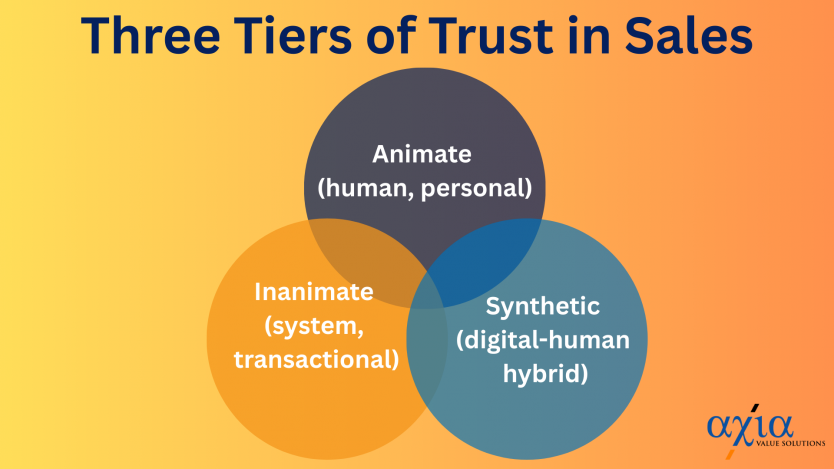We’ve all heard the phrase: “People do business with people they know, like and trust.” It’s been a sales mantra for decades. But lately I’ve been wondering if it still captures the full picture of how buying decisions are made.
A colleague and I were talking about trust in the relationship between buyer and seller. He challenged whether trust is still the right word in the way we use it. That got me thinking.
When you buy a product on Amazon, do you “trust” the seller? Probably not. You trust the platform. You trust the reviews. You trust the process that makes it easy to return something if it’s not right. That feels different from the kind of trust you’d need if you were about to sign a multimillion-pound contract with a company where people’s jobs, reputations and livelihoods are on the line.
I think there are two levels of trust at play.
- Animate trust: the kind that exists in human relationships. This is built on credibility, honesty, reliability, and sometimes even intimacy. We trust people when we believe they’ll look after our interests, especially when things get difficult.
- Inanimate trust: the kind we extend to systems, brands, guarantees and processes. We don’t “know” or “like” Amazon or Apple in a personal sense, but we trust them because they’ve proved to be dependable, predictable and safe.
Both types of trust influence how buyers behave.
But I think the rise of AI and parasocial relationships is blurring the lines. Think about the way people feel connected to influencers they’ve never met, or even the way some interact with chatbots. That feels like a third category of trust, something I’d like to call synthetic trust. It looks and feels human but isn’t. It creates an impression of intimacy without the actual relationship behind it.
For sellers, this matters. Because if we keep thinking only in terms of “know, like and trust,” we’re missing the nuance of how buyers really make decisions today. Sometimes they don’t need (or even want) to know us personally. Sometimes they’ll happily trust the system instead. And sometimes they’ll be swayed by the illusion of intimacy in a digital interaction.
So I’d like to suggest :
Animate Trust
- What it is: The trust built between people. Rooted in credibility, honesty, empathy and integrity.
- Where it matters: Complex, high-stakes, relationship-driven deals. When buyers need to believe you will look after their interests.
Inanimate Trust
- What it is: The trust we place in systems, processes, platforms and brands.
- Where it matters: Transactional buying. We don’t need to know or like Amazon, but we trust it to deliver.
Synthetic Trust
- What it is: The illusion of personal trust created by non-human interactions. Think AI, chatbots, influencers, or digital avatars that feel human but aren’t.
- Where it matters: Increasingly everywhere buyers interact with digital-first brands. It mimics the warmth of animate trust but is powered by inanimate systems.
What might this mean in practice?
It means we need to understand which level of trust our buyers are operating in. If you’re in a high-stakes B2B sale, animate trust is still critical – you can’t outsource credibility, empathy and commitment to a system.
If you’re selling a transactional product, inanimate trust might be all you need. And if you’re building relationships at scale online, you may be creating synthetic trust without even realising it.
The challenge for us as sales professionals is not to take trust for granted but to ask: what kind of trust does my buyer really need in order to move forward?
That feels like a much sharper question for the times we’re in.
I’d really love to hear your thoughts and open out the discussion. What do you think?
#Trust #B2BSales #SalesLeadership #SyntheticTrust #ValueChallenge

